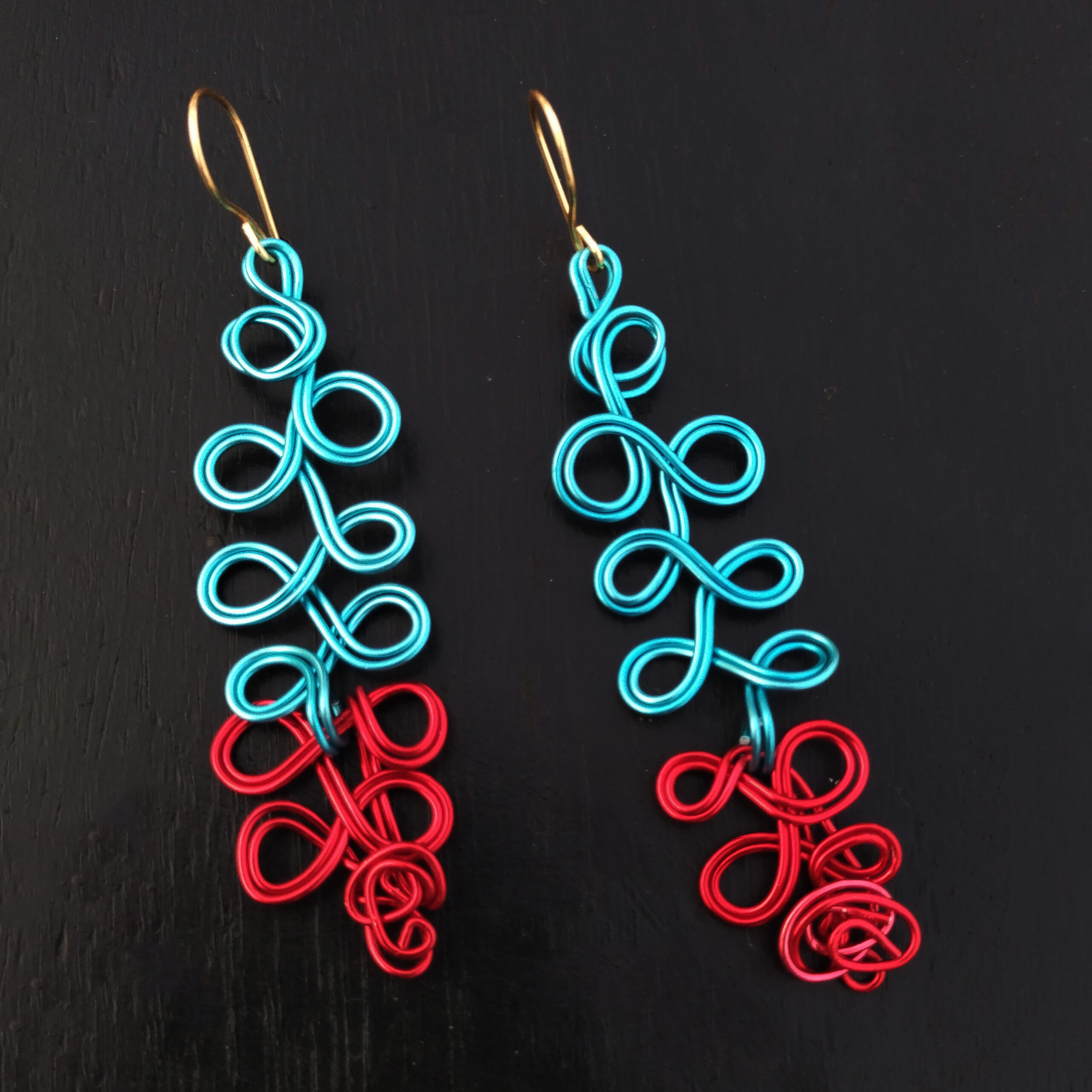I have had a long fascination with coloured wire jewellery. In 2013, in my quest for vibrant coloured wire, I came across anodised aluminium wire. It was brightly coloured, inexpensive and had a dead soft temper. I used aluminium wires of various colours and gauges along with brass and copper wire to create my Alambre collection. While the pieces looked beautiful, they were not sturdy due to the soft nature of the wire. Therefore, I stopped using aluminum wire while making products for sale. But I knew in the back of my head that it will be a go-to material when I need to make inexpensive jewellery quickly. Such an opportunity came by recently and I made a few pieces of coloured wire jewellery using anodised aluminum wire to be worn by two people at a fashion show.

Anodised aluminium
According to Aluminum Anodizers council (TM) “Anodising is an electrochemical process that converts the metal surface into a decorative, durable, corrosion-resistant, anodic oxide finish.” In this process, an acid electrolyte bath is used along with a cathode. The metal acts as the anode and current is passed enabling the ions to move and attach themselves to the metal being anodised. Typically, Aluminum is anodised but metals such as titanium and niobium can be anodised as well. I learned a little bit about anodising niobium at a workshop that I attended at Beadfest in 2016.

Plating or coating is done on the surface of the metal. Hence it peals of quickly. However, anodising allows the colour to adhere to the metal substrate via electric current. Therefore, it is more durable than plating.

Coloured wire jewellery
I made two rings to be worn by a man, a pair of earrings and a crown/hair accessory that later became a hair net. They were all inspired by the “We Love Delhi” graffiti at the Lodhi Art District in New Delhi, India.

I made the hairnet first. Wires were combined and twisted to look like the graffiti on the wall. It was an armband to begin with but soon morphed into a hair accessory based on necessity. Since I used dead soft aluminium wire I could mould it to fit my head. It does look really messy in pictures as these photographs were taken after using (abusing) it to the maximum.

The earrings came next as a contrast to the hair net. They were simple scrolls with messy rosette at the ends. I debated using more colours but finally settled for just three. The final pieces of coloured wire jewellery that I made were the rings. I needed a bold and colourful accessory that was simple and quick to make and would fit a man’s fingers. Once again the dead soft vibrant wire came to my rescue and I made these rings in about 20 minutes.
While the colourful aluminium wire is not something that I would recommend for everyday or special occasion jewellery, it is perfect for one time use such as photoshoots and fashion shows. Have you worked with anodised aluminum wire? What has been your experience? Tell me in the comments.
I hope you find it interesting
Cheers



What do you think?